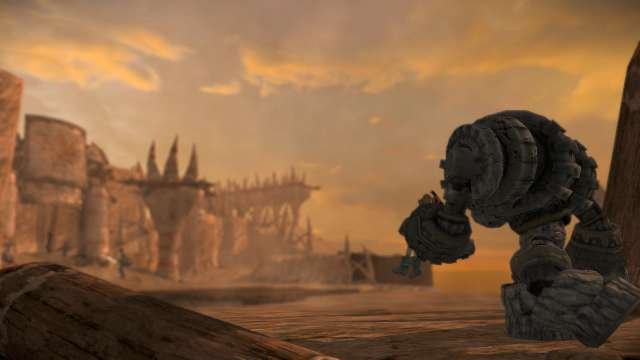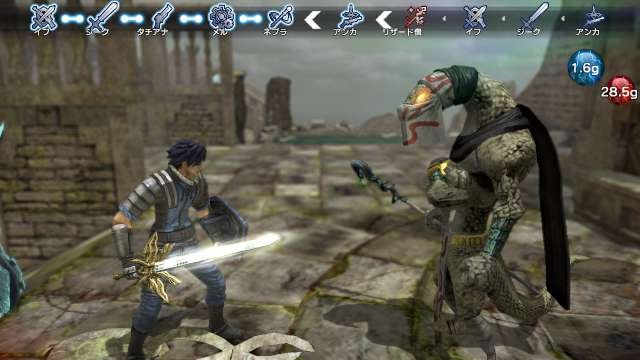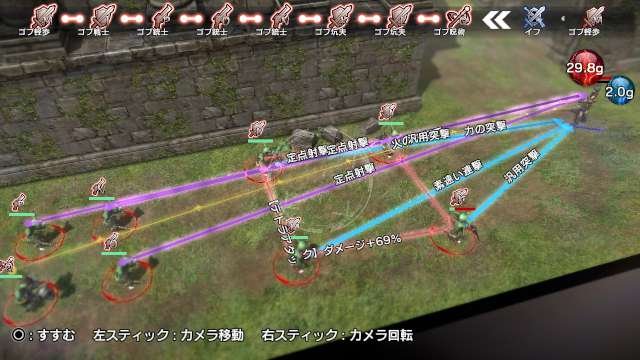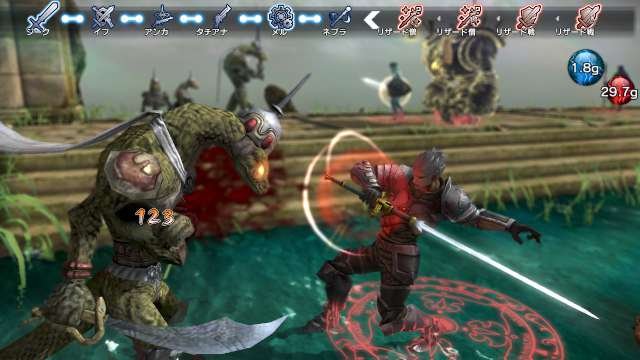A tactics game where "hard" mode is the easy setting.
"We're really excited about this title," Alan Costa Assistant Producer at NIS America told me as we rode up an elevator at a hotel in San Francisco's Chinatown. "We know that everyone thinks of us as the Prinny guys and we love those titles, but this is different."
When we arrived at the room, I saw two Vitas, both running alpha builds of Natural Doctrine. "We wanted to hook this up to the TV and run it off the PS3 build," Armin Collosi, a Manager from NIS America's marketing team, added sheepishly, "but there's no HDMI port. I mean, we thought 'what hotel would have a television without an HDMI port?'"
The game they were excited to show me was Kadokawa Games Studios' first in-house title, Natural Doctrine. The creators, former developers from Final Fantasy Tactics and Final Fantasy XII, set out to create the ultimate tactics game and from what I saw, they've set that bar incredibly high.
"It's kind of like Dark Souls crossed with X-COM," Collosi said, starting a few chapters into the campaign to give me a glimpse of gameplay once the game and the player settles into its rhythm. I asked if by "Dark Souls" he meant the kind of perma-death features that are popular in games like Valkyria Chronicles and the Fire Emblem series.
"If a single member of your squad dies, the game ends," Costa interjected. "This is the Navy Seals of tactics games: You go in together and you don't leave a man behind."
"We'll see if I can do this without dying," Collosi said, referring to the game's intense difficulty, despite demoing the game on its easiest setting. "Last night I practiced the level and had it down perfect, but this morning…"
It's easy to see why NIS America is excited about Natural Doctrine. As the level started, I was immediately reminded of the best tactical gameplay I'd seen in the last console generation, with all the innovation put together in one place. It started with what looked like a fairly standard tactical overhead map.

The level started as an escort mission where the squad had to protect a magic user approaching an exposed cobblestone bridge, about to be ambushed. Collosi moved his men into position, into areas delineated by blue boxes that showed where the characters could move. Where Doctrine stood out was in how that movement could be extended with the use of its linking system.
By moving characters into close-enough proximity, you could reactivate a prior character's spent actions, allowing the whole squad to move up as long as you moved them together. It's a key feature in Natural Doctrine that helps facilitate the squad-based gameplay. Collosi turtled the squad toward the man they were supposed to protect.
When they reached line-of-sight with the enemy, Collosi put his ranged attacker in position but switched the game into a first-person mode so he could establish line-of-sight. Costa explained that it was possible for ranged members to miss because a wall might be between them and the enemy or even to hit your own units with friendly fire.
After his turn ended, all hell broke loose, the enemy's riflemen quickly made short work of the magic user and Collosi hadn't gotten his squad into the correct position to adequately defend him. He laughed as the rank screen came up, giving him an "E-" rating, and restarted the level, this time being more careful about his squad placement.

He did much better the second time. His squad moved to attack as the enemy moved in and his ranged attacker added support fire as part of the game's counter system, which has linked characters automatically supporting each other. Once they'd taken out all the enemies in an adjacent square, his squad immediately moved to occupy it automatically, adding a tactical element to whom you choose to target as part of the battle.
As the encounter wound down, Collosi gained control of the magical unit he had been escorting, but the map didn't end. He told me at this point, when they were ending the demo, something unexpected would soon show up that would make the encounter that much more intense and these turning points were a regular part of gameplay. Boss encounters were supposed to be incredibly difficult.
"The feeling of accomplishment when you finally beat some of these maps is amazing," Costa said. Colossi added that a member of their team had played through the game twice and estimated its length at about 70 hours, not including the head-to-head multiplayer. Crazier still, the original Japanese version of the game had no saves. If you died, you had to go back to the beginning of the game. Luckily, NIS America has gracefully added a save function to this version.
"It's different from the other stuff we've published," Costa said. "In Disgaea, you can grind—you're supposed to grind—but this game isn't designed for that. Yeah, you can replay some earlier levels and grind a little, but eventually it's like 'Okay, you have to go.'"
It was easy to see what Costa meant. The game clearly placed the value on tactical ability rather than power. Then he and Collosi began playing an ad-hoc session of the multiplayer, something they told me they hadn't shown at E3. He explained how the game was chess-like in multiplayer, since you had the ability to see where your opponent was moving his pieces while it was his turn.

Multiplayer uses a CCG model. The game starts the player off with a beginner's deck of characters and expands with defeating enemies in single-player. Armin laughed as he told me that the Japanese players were brutal and would match up with lower ranked players with low level decks, then suddenly change their decks to high level immediately before combat started. Unlike the single-player, the multiplayer didn't end with just one character death.
"Now you can see how much of a bonus I can get with the linking system," Costa said, directing my attention to the link-line between two of his characters that also displayed some percentage data. "And you would think my bonuses would be higher the closer my guys are together, but it's actually higher the farther they are while apart and still linked." He moved his ranged attacker as far as he could from his melee fighter while remaining in the same square for the optimal effect, but his ranged attacker ended up firing into a stone wall because he hadn't checked his line of sight. Whoops.
Natural Doctrine's story is set in the fortress city of Feste, in which the main character hopes to buy citizenship by mining the magical material called Pluton. The main character doesn't even start out as a miner, but as someone who's just trying to get a job helping a miner. The game features four different races, each with special abilities and skills: the Lizardmen are the primary magic users, but using magic expends Pluton at a heavy rate.
The game looked fantastic on PS Vita, and Costa told me it would have graphical enhancements for the PS4 version. Moving between the overhead and first-person view reminded me of Valkyria Chronicles but with a grittier, more realistic look and a kind of high-fantasy setting. It still had a Japanese anime-aesthetic, but much less cartoony than most of what NIS America has published.
After this meeting, Natural Doctrine went from being a game I knew nothing about to the most exciting game I'd seen this year. It invoked everything I loved about the Final Fantasy Tactics series, Vagrant Story, The Last Story, and Valkyria Chronicles, while pushing forward with something excitingly new and invigoratingly difficult. It is expected to release on the PS Vita, PS3, and PS4, with crossplay between the consoles, in the fall.







